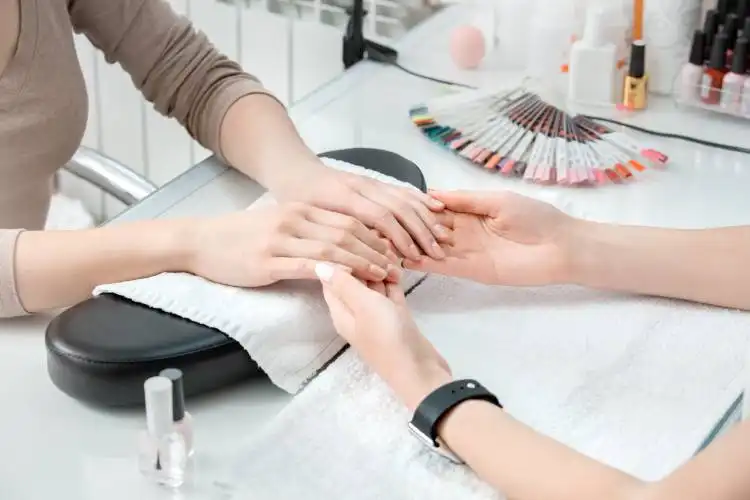Start a Tattoo Parlor
Making Art Meet Skin: The Intriguing Venture of Running a Tattoo Parlor
| Updated


TATTOO PARLOR
A tattoo parlor is an intriguing, creative venture that marries art and human physiognomy in a unique blend. Imagine offering your clients a chance to tell their life stories, express emotions, or make important declarations on their skin - a canvas that accompanies them everywhere. This type of business involves providing tattoo services, where professional artists apply permanent decorative designs on clients' bodies. It's not just about needles and ink, it's literally a business where art meets skin.
Jump to Business Plan
RELATED BUSINESS IDEAS
Browse ALL Health & Beauty Innovations Business Ideas
Discover Your Perfect Domain
Unlock the door to your online success with our hand-picked selection of premium domain names. Whether you're starting a new venture or rebranding an existing one, the right domain can set the tone for your digital presence. Browse through our curated list, each with its unique potential to enhance your brand's visibility and credibility.
TATTOO PARLOR MINI BUSINESS PLAN
This a quick reality check to help you identify the strengths and weaknesses of your business concept before you dive in.
Expected Percent Margin:
- Gross Margin: 60-70%
- Net Profit Margin: 15-25%
Earnings Expectations:
- Daily Earnings: $400 - $800
- Weekly Earnings: $2,800 - $5,600
- Monthly Earnings: $12,000 - $24,000
- Annual Earnings: $144,000 - $288,000
Actions to Hit Those Numbers:
Artist Staffing and Payments:
- Hiring: Employ 2-4 tattoo artists who are experienced, professional, and have a diverse range of styles.
- Artist Payment: Pay artists on a commission basis, usually 40-60% of each tattoo cost.
Marketing and Customer Acquisition:
- Social Media: Showcase your artists' work on Instagram and Facebook with at least daily posts.
- Word of Mouth: Encourage referrals by offering discounts or freebies to customers who bring in new customers.
Studio Management:
- Leasing: Try to keep your lease cost below 10% of your monthly earnings.
- Supplies: Invest in high-quality, safe tattoo inks, needles, and sterilizing equipment.
Cost Control:
- General Expenses: To minimize overhead costs, opt for a basic, clean, and comfortable studio space that meets health department requirements.
- Utilities and Maintenance: Budget between $300 - $600 a month on utilities, including waste disposal for hazardous materials.
Business Operations:
- Opening Hours: Operate around 6-8 hours a day, keeping in mind busy times may be evenings and weekends.
- Appointment Volume: Aim to have each artist completing 2-3 tattoos per day, depending on their complexity and size.
Please remember these are broad estimations and can vary greatly depending on several factors like location, competition, economic conditions, and business management. You should always consult with a financial advisor for personalized advice.|
NOT WHAT YOU HAD IN MIND? Here are more ideas



Browse ALL Health & Beauty Innovations Business Ideas
Grab Your Business Website Name
Before you get caught up in the whirlwind of setting up your business, invest in a domain name. It's a small but significant step that lays the foundation for your brand and makes it easier for customers to find and trust you. Just like you wouldn't build a house without securing the land first, don't build a business without securing your domain name.
"Why? Can't that wait?" Here's why it shouldn't
Step 1: Determine if the Business is a Right Endeavor
Breakdown of Startup Expenses
Before starting a tattoo parlor, it is important to understand the startup costs associated with the business. This includes costs for the building, equipment, licenses, and other necessary supplies. Depending on the size of the business, the startup costs can range from a few thousand dollars to tens of thousands of dollars. It is important to research the costs associated with the business and make sure that the business is financially feasible.
Breakdown of Ongoing Expenses
In addition to the startup costs, there are also ongoing expenses associated with running a tattoo parlor. These expenses include rent, utilities, supplies, and employee salaries. It is important to understand the ongoing expenses associated with the business and make sure that the business is able to cover these costs.
Examples on Ways to Make Money
There are a variety of ways to make money with a tattoo parlor. This includes charging for tattoos, selling supplies, and offering services such as piercings and body art. It is important to research the different ways to make money with a tattoo parlor and make sure that the business is able to generate enough income to cover the expenses associated with the business.
Step 2: Name the Business
When naming a business, it is important to make sure the name is memorable and reflects the type of business. It should also be easy to spell and pronounce. Consider using a combination of words that are related to the business, such as “Tattoo Parlor” or “Ink Spot.” Additionally, consider using a play on words or puns to make the name more interesting. For example, a tattoo parlor could be named “Inkredible” or “Inked Up.” It is also important to make sure the name is not already taken by another business. Research the name online and check with the local government to make sure the name is available. Additionally, consider registering the name as a trademark to protect it from being used by another business.
Step 3: Obtain Licenses and Permits
Research Local and State Requirements
Before you can open a tattoo parlor, you must research the local and state requirements for operating a tattoo business. This includes researching the zoning laws, health codes, and other regulations that may apply to your business. You may need to contact your local government office or the state health department to find out what requirements you must meet in order to open a tattoo parlor. Make sure to ask about any fees that may be associated with obtaining the necessary licenses and permits.
Obtain Necessary Licenses and Permits
Once you have researched the local and state requirements, you can begin the process of obtaining the necessary licenses and permits. Depending on the state and local regulations, you may need to obtain a business license, a health permit, a zoning permit, and other permits. Make sure to contact the local government office or the state health department to find out what licenses and permits you need to obtain. Once you have obtained all the necessary licenses and permits, you can move on to the next step.
Step 4: Find a Suitable Location
Considerations for Choosing a Location
When selecting a location for a tattoo parlor, it is important to consider the local laws and regulations, the size of the space, the amount of foot traffic, and the cost of the rent or purchase. It is also important to consider the demographics of the area and the competition. It is important to choose a location that is easily accessible and has plenty of parking.
Lease or Purchase a Property
Depending on the size of the business, it may be more cost-effective to lease a property instead of purchasing it. When leasing a property, it is important to read the lease agreement carefully and make sure that all of the terms are understood. It is also important to consider the length of the lease and the cost of the rent. If purchasing a property, it is important to consider the size of the property, the cost of the purchase, and the potential for future growth. It is also important to consider the zoning requirements and any other restrictions that may be in place.
Step 5: Design the Space
Design the Layout of the Space
When designing the layout of the space, it is important to consider the flow of the space and the safety of the clients. It is important to have a space that is comfortable for both the artist and the client. The layout should be designed to maximize the use of the space and provide easy access to the necessary equipment. Consider the size of the space and the number of stations that will be needed. It is also important to consider the type of equipment that will be needed and the size of the space that will be needed to accommodate it.
Purchase Necessary Equipment
When purchasing the necessary equipment, it is important to consider the type of equipment that will be needed and the budget that is available. Consider the type of tattoo machines that will be needed, the type of ink that will be used, and the type of needles that will be used. It is also important to consider the size of the space that will be needed to accommodate the equipment and the number of stations that will be needed. Consider the cost of the equipment and the cost of any additional supplies that may be needed. Additionally, consider the cost of any additional safety equipment that may be needed, such as gloves and masks.
Step 6: Hire Staff
Considerations for Hiring Staff
When hiring staff for a tattoo parlor, it is important to consider the type of staff needed. Depending on the size of the parlor, it may be necessary to hire a receptionist, tattoo artists, and a body piercer. It is also important to consider the skill level of the staff, as well as the cost of hiring them. It is important to ensure that the staff is properly trained and certified in order to provide the best service to customers. Additionally, it is important to consider the cost of benefits and insurance for the staff.
Recruiting and Interview Process
When recruiting staff for a tattoo parlor, it is important to create a job description that outlines the duties and responsibilities of the position. This will help to ensure that the right candidates are being considered for the job. Additionally, it is important to create a list of questions to ask during the interview process in order to get a better understanding of the candidate's skills and experience. It is also important to check references and conduct background checks to ensure that the candidate is suitable for the job. Additionally, it is important to consider the cost of training and onboarding the new staff member.
Step 7: Market the Business
Create a Website
Creating a website for the tattoo parlor is a great way to reach potential customers. It should include information about the business, such as the services offered, the hours of operation, and contact information. It should also feature photos of the artists’ work and any special offers. Additionally, it should include a blog section where the parlor can post updates and articles related to the tattoo industry. This will help build a community of customers and followers.
Utilize Social Media
Social media is a great way to reach potential customers and build a following. Platforms like Instagram, Facebook, and Twitter are great for posting photos of the artists’ work, as well as any special offers or promotions. Additionally, they can be used to engage with customers, answer questions, and build relationships with potential customers.
Advertise in Local Publications
Advertising in local publications is another great way to reach potential customers. This can include newspapers, magazines, and even radio or television ads. It is important to make sure the advertisement stands out and is eye-catching. Additionally, it should include information about the services offered, the hours of operation, and contact information. This will help potential customers find the parlor and learn more about the services offered.
Step 8: Establish Policies and Procedures
Create a Health and Safety Plan
Creating a health and safety plan is essential for any tattoo parlor. This plan should include guidelines for sanitation and sterilization of equipment, as well as policies for the protection of both the customer and the artist. It should also include a plan for handling any medical emergencies that may arise. Additionally, the plan should include a list of safety protocols for the artist to follow, such as wearing protective clothing and gloves.
Create a Customer Service Plan
Creating a customer service plan is also important for any tattoo parlor. This plan should include guidelines for customer interactions, such as how to handle customer complaints and how to provide excellent customer service. It should also include policies for scheduling appointments, taking payments, and handling refunds. Additionally, the plan should include a list of policies for the artist to follow, such as how to interact with customers and how to handle any difficult situations.
Step 9: Open for Business
Prepare for the Grand Opening
Before opening the doors of the tattoo parlor, it is important to make sure everything is ready for the grand opening. This includes making sure all the necessary permits and licenses are in place, the space is clean and organized, and the staff is trained and ready to go. It is also important to create a marketing plan to advertise the grand opening and attract customers. This could include creating a website, distributing flyers, and running ads in local newspapers.
Celebrate the Launch
Once everything is ready, it is time to celebrate the launch of the tattoo parlor. This could include hosting a grand opening event to introduce the business to the community. Invite local media outlets and influencers to the event to help spread the word. Additionally, consider offering discounts or free services to the first customers to help build a loyal customer base. Finally, make sure to thank everyone who helped make the launch of the tattoo parlor a success.
EXPLORE MORE CATEGORIES
Browse ALL Business Idea Categories
TAKE THE NEXT STEPS










